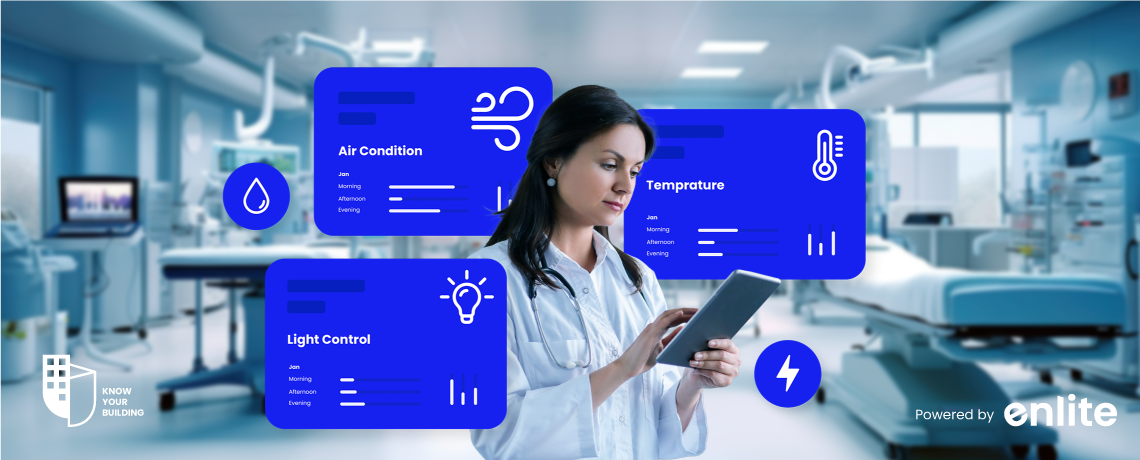Introduction
Healthcare facilities play a pivotal role in society, providing a wide range of medical services to individuals in need. The quality of care and the overall patient experience is heavily influenced by the environment within these facilities, making it essential to focus on optimizing the physical infrastructure. In recent years, building management systems have evolved to become critical tools in improving healthcare facilities’ efficiency, safety, and comfort. This blog explores how BMS can transform these facilities to enhance patient care.
What is a Building Management System?
Building Management Systems, often referred to as BMS or Building Automation Systems (BAS), are technology-driven solutions designed to streamline and optimize the operations of various building systems within healthcare facilities and other structures. These systems serve as the central nervous system of a building, providing comprehensive control, monitoring, and automation capabilities. In the context of healthcare, BMS plays a critical role in creating an environment that is conducive to patient well-being, safety, and comfort. BMS technology encompasses a range of functions, including the management of heating, ventilation, and air conditioning (HVAC) systems, lighting, security, access control, and more.
How Building Management Systems Support Healthcare Facilities
Building Management Systems (BMS) are designed to streamline and optimize the operations of various building systems within healthcare facilities. These systems provide comprehensive control, monitoring, and automation capabilities, offering a wide range of benefits that directly support and enhance the functioning of healthcare environments. Here’s a detailed look at how BMS supports healthcare facilities:
Enhanced Comfort for Patients and Staff:
Precise Climate Control: BMS systems can maintain precise temperature and humidity levels throughout the facility, ensuring patient comfort and safety. For example, they can adjust HVAC settings based on real-time occupancy data to optimize energy use without compromising comfort.
Noise and Lighting Management: BMS technology can control lighting levels and noise levels within different areas of the facility, creating a more serene and therapeutic environment for patients. This contributes to improved patient satisfaction and well-being.
Energy Efficiency and Sustainability:
Optimized Energy Consumption: BMS continuously monitors and adjusts the operation of HVAC, lighting, and other building systems to minimize energy consumption. This not only reduces operating costs but also lowers the carbon footprint of healthcare facilities, supporting sustainability goals.
Demand Response: BMS can participate in demand response programs, where energy usage is dynamically adjusted during peak demand periods, further reducing utility costs and strain on the power grid.
Ensuring Safety and Security:
Access Control Integration: BMS can integrate with access control systems to manage and monitor who enters and exits the facility. This is crucial for maintaining the security of sensitive areas such as patient rooms, medication storage, and laboratories.
Surveillance and Alarm Integration: BMS can link with surveillance cameras and alarm systems, allowing real-time monitoring of critical areas and immediate response to security breaches or safety incidents.
Streamlining Facility Operations:
Proactive Maintenance: BMS can continuously monitor the condition of critical equipment, such as HVAC units and generators. When an issue is detected, the system can trigger automated maintenance requests, preventing downtime and ensuring that essential systems are always operational.
Remote Monitoring: Many BMS solutions offer remote monitoring capabilities, allowing facility managers and engineers to access real-time data and make adjustments from anywhere. This is especially valuable for ensuring uninterrupted patient care.
Cost Savings and Return on Investment (ROI):
Reduced Operating Costs: BMS can significantly reduce energy consumption, maintenance costs, and labor expenses by automating tasks and optimizing resource allocation.
Extended Equipment Lifespan: By proactively monitoring and maintaining equipment, BMS can help extend the lifespan of critical assets, reducing the need for costly replacements.
Improved Patient Flow: BMS can optimize the allocation of resources, including staff and equipment, to ensure efficient patient flow and minimize wait times, enhancing the overall patient experience.
Future Trends in Healthcare Facility Management
Incorporating Artificial Intelligence and Machine Learning
Incorporation of Artificial Intelligence (AI) and Machine Learning (ML) into healthcare facility management promises to revolutionize operations and patient care. These advanced technologies will enable healthcare institutions to predict equipment failures, optimize energy consumption, and proactively manage assets, reducing downtime and operational costs.
Sustainability and Green Building Practices
In today’s world, there is a noticeable shift towards prioritizing sustainable and eco-friendly building practices within healthcare facilities. This change is driven by heightened environmental awareness, cost reduction imperatives, and the desire to create healthier environments for both patients and staff. At the heart of this transition lies the crucial role of Building Management Systems (BMS). These systems enable healthcare institutions to monitor and control building systems in real-time, optimizing energy efficiency, minimizing waste, and ensuring a comfortable and sustainable environment. Sustainability efforts encompass energy-efficient technologies, renewable energy integration, water conservation, and green building practices. BMS technology aligns with these goals, facilitating the pursuit of environmentally responsible healthcare management, reduced operational costs, and enhanced patient well-being.
Conclusion
In today’s healthcare landscape, Building Management Systems (BMS) stand at the forefront of transformative change. These systems, as detailed in this blog, play an indispensable role in elevating patient care, operational efficiency, and sustainability within healthcare facilities. By enhancing patient and staff comfort, optimizing energy use, ensuring safety and security, and streamlining operations while delivering substantial cost savings, BMS technology has become integral to healthcare management. Looking ahead, the integration of Artificial Intelligence and Machine Learning promises predictive maintenance and data-driven decision-making, while sustainability and green building practices underscore a shift toward eco-conscious, healing environments. In this dynamic evolution, healthcare facilities embracing BMS and sustainable principles are poised to provide superior patient experiences while reducing environmental impact and achieving operational excellence, further solidifying their commitment to responsible and patient-centric healthcare management.














